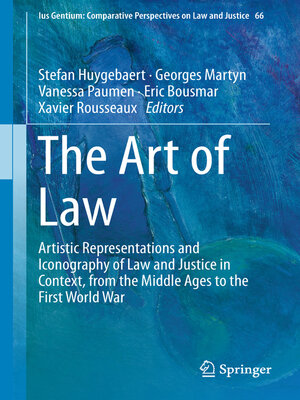The Art of Law
ebook ∣ Artistic Representations and Iconography of Law and Justice in Context, from the Middle Ages to the First World War · Ius Gentium: Comparative Perspectives on Law and Justice
By Stefan Huygebaert

Sign up to save your library
With an OverDrive account, you can save your favorite libraries for at-a-glance information about availability. Find out more about OverDrive accounts.
Find this title in Libby, the library reading app by OverDrive.



Search for a digital library with this title
Title found at these libraries:
| Library Name | Distance |
|---|---|
| Loading... |
The contributions to this volume were written by historians, legal historians and art historians, each using his or her own methods and sources, but all concentrating on topics from the broad subject of historical legal iconography. How have the concepts of law and justice been represented in (public) art from the Late Middle Ages onwards? Justices and rulers had their courtrooms, but also churches, decorated with inspiring images. At first, the religious influence was enormous, but starting with the Early Modern Era, new symbols and allegories began appearing. Throughout history, art has been used to legitimise the act of judging, but artists have also satirised the law and the lawyers; architects and artisans have engaged in juridical and judicial projects and, in some criminal cases, convicts have even been sentenced to produce works of art. The book illustrates and contextualises the various interactions between law and justice on the one hand, and their artistic representations inpaintings, statues, drawings, tapestries, prints and books on the other.







